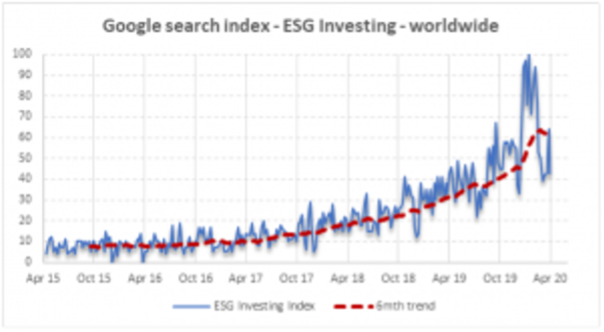The majority of savers in defined contribution (DC) schemes are invested in the default fund. In fact, some studies suggest as much as nine out of every ten members stay in the default.
This is largely a result of inertia and status quo bias – the preference for people to do nothing and for the current state to endure as a result of inaction. Basically, it is just easier.
Given this behaviour and the high percentage of people invested in defaults, this fund offering should be the gold standard of providers as it can have significant implications for retirement outcomes. A 2019 study published by the Tax Incentivised Savings Association (Tisa) found that in the prior three years, 20 of the largest pension funds’ defaults produced returns ranging from 3.4% to 11.9% p.a., with a mean of 8% p.a. For an employee starting with a salary of £30k, being invested at 3.4% or 8% during his/her working life, would translate to a staggering difference in retirement outcomes of over £450k (assuming wages rise with inflation, employer also contributes etc).
The default fund therefore needs to provide the best value for money for investors, maximising their returns for an appropriate level of risk and costs.
But is it only about the money?
While providing for a decent retirement is undoubtably the goal of a pension investment, the rise of ESG (environmental, social and governance) investing is becoming more and more prevalent. Estimated net flows into open-end and exchange-traded sustainable funds that are available to U.S. investors totalled $20.6 billion in 2019. That is nearly four times the previous annual record for net flows set in 2018. Google trend data shows that interest in the term “ESG investing” globally has also increased significantly over the past five years (graph below). Google trend graphs….

While ESG fund AUM is likely to continue to grow and the momentum behind ESG strategies may persist, there are some more fundamental reasons why ESG strategies should be incorporated in pension defaults:
1. Incorporating ESG does not mean sacrificing performance
One of the arguments against ESG investing that sadly remains prevalent, is that by investing in ESG funds, there is a sacrifice of performance. It is believed that successful ESG investing, of having your cake and eating it, is too good to be true.
But if we think about ESG investing at an intuitive level, companies that take a stakeholder-centric approach, build loyal customer bases, identify and mitigate risks, drive profitability, succeed under strong corporate governance and invest in sustainable long term projects must surely lead to outperformance. This should form part of our fundamental analysis.
Additionally, the current coronavirus pandemic provides analytical data to support the potential for ESG funds to outperform. A recent report from S&P Global suggested that investment funds that make decisions based partly on ESG criteria have outperformed the S&P 500 during the recent market crash. Across 17 ESG exchange-traded and mutual funds, 12 had lost less value than the 13.7% shed from the S&P 500, with the best-performing suffering only a 5.4% loss. Research carried out by Fidelity International found similar results. ESG should not be seen as a constraint, but rather as an opportunity.
2. ESG strategies do not have to be actively managed nor overly costly
Another widely held belief is that the only strategy that is truly ESG, is the use of actively managed funds. These usually come with much higher costs than passively managed funds which is often a large constraint for DC funds (and master trusts in particular).
However, responsible investing incorporates much more than simply excluding certain sectors, although that is certainly an approach. Tools such as asset stewardship and investment tilts incorporate an ESG approach and allow a more passive approach (at a lower cost compared to active management).
3. The world is in crisis and ESG investing can help
From shifting weather patterns that threaten food production, to rising sea levels that increase the risk of catastrophic flooding, the impacts of climate change are global in scope and unprecedented in scale. The UN reports that there is alarming evidence that important tipping points, leading to irreversible changes in major ecosystems and the planetary climate system, may already have been reached or passed.
By incorporating ESG into the investment decision making process, we can direct capital towards solutions that contribute towards a more sustainable future. Investing in the cyclical economy, limiting or ceasing investment in fossil fuels or ensuring active stewardship in companies with no plans for a sustainable transition to a greener future can all help to combat climate change and create a better tomorrow.
4. Regulations will continue to grow
The Occupational Pension Schemes (Investment) Regulations were updated in 2019 to require pension scheme trustees to disclose how they take account of climate change and other environmental, social and governance (ESG) factors. In early 2020, the government put forward an amendment to the Pension Schemes Bill which goes much further than current rules; large UK occupational pension schemes would be required to assess the impact of climate change on their investments and report that information to scheme members.
Despite this, government action to tackle climate change has so far been insufficient to achieve the commitments made under the Paris Agreement. The UN PRI therefore sees it as inevitable that governments will be forced to act more decisively than they have so far. They report “The question for investors now is not if governments will act, but when they will do so, what policies they will use and where the impact will be felt. The IPR [Inevitable Policy Response] project forecasts a response by 2025 that will be forceful, abrupt, and disorderly because of the delay.”
If schemes want to provide a gold standard investment option as the default, a future-proof investment strategy needs to incorporate ESG in order to remain within regulations.
5. It is part of fiduciary duty
The UN estimates that there will be 10bn people in the world by 2050. Just over 2bn of these will be over 65 as more of us will live longer. This means that more of our future selves will be affected by the way our nations and companies are run, the state of our environment and the wellbeing of the people in it. As fiduciaries, trustees have a responsibility to consider the world that beneficiaries will retire into.
6. Investors want it
A report by Franklin Templeton surveyed 2,500 savers aged 22 – 38 about workplace pensions and responsible investment. Half of these believed ‘responsible investing’ should be built into the default fund and 45% would be willing to put more in their pension pots if they thought it was going to responsible investments. This age cohort is likely to be the first that will rely solely on pension investments in retirement – rather than more generous and guaranteed final salary pensions – so their views need to be at least considered when it comes to how their pension savings are invested.
Conclusion
We are at a time when ESG is becoming centric to many investment processes. In fact, a few pension schemes have already migrated to an ESG default option for their members. Similarly, several large asset managers are incorporating ESG funds into some of their flagship actively managed funds.
Whilst many pension schemes are currently considering making their default strategy ESG compliant, they are still asking themselves the wrong question: It is no longer about assessing the risks of adopting ESG-investing, but rather about realising the risks associated with the status-quo.
It is not “why?” … it is “why not?”




